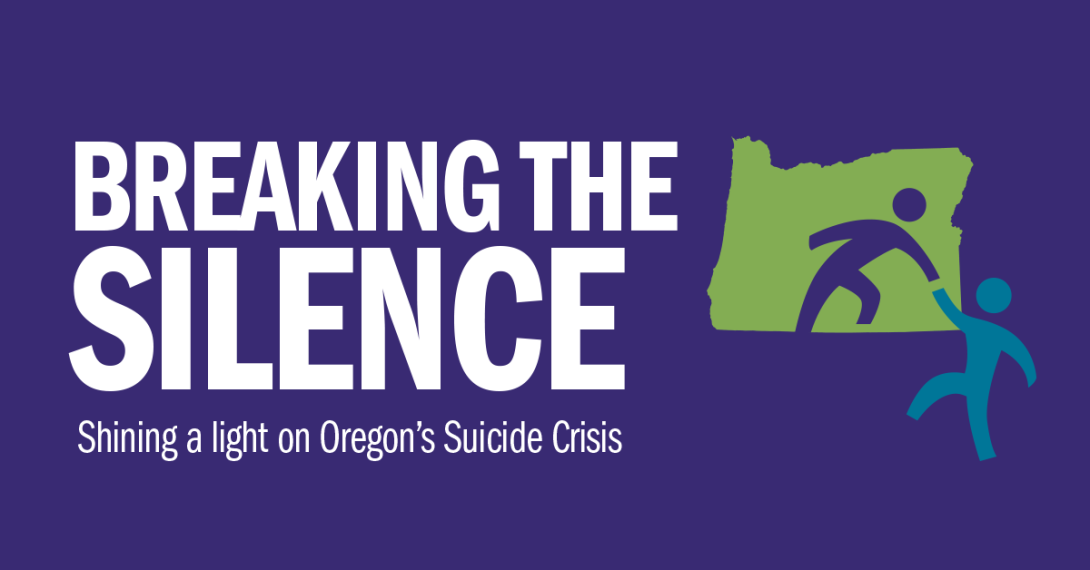
Something amazing happened last week in Oregon: in coffee shops, at the gym, driving carpools, meeting friends -- just about everywhere people gather in Oregon, we have been talking about suicide and suicide prevention. Over 30 news organizations across the state teamed up to shine a light on the public health crisis of suicide. Dozens and dozens of news stories have appeared on our favorite TV stations, in newspapers big and small, on podcasts and on the radio – each article and broadcast telling stories of hope and of healing and of overcoming the risk and pain of suicide.
Never before have journalists linked arms like this to shine the light on suicide and suicide prevention.
It feels like that moment – Oregonians know it well – when the sun first peeks through the clouds after many months of gray and rain. It’s bright and it’s warm and it’s promising.
For far too long, suicide has remained in the shadows – something we just didn’t talk about. The reasons are complex – we want to respect the privacy of families enduring the pain of suicide, and we want to be careful not to prompt contagion – a very real risk.
But the silent treatment has not worked. Ignoring the reality and scope of the suicide crisis has helped erect a wall of stigma that discourages people from getting help. When even talking about suicide is taboo, many people struggling with depression feel that they just can’t show vulnerability – they feel that they should just keep it to themselves. And all too often, left alone, these folks can’t find a way forward – a way to live.
I can’t tell you how many parents have told me they lost their child because of stigma – their son or daughter just didn’t think they could reach out for help because suicide is not something we are supposed to talk about.
And while we have remained silent, the suicide crisis has grown. About 825 Oregonians died by suicide in 2017, up 35 percent since the year 2000. Suicide is now the second-leading cause of death among young Oregonians. Nationally, more than 42,000 people died by suicide last year – more than the number of Americans killed in action in the Vietnam War.
This week, Oregon journalists decided to Break the Silence – to shine a light on this public health crisis with responsible reporting on suicide. I am hopeful this will launch a community conversation and help erase the stigma that keeps people from getting help – we need to embrace the reality that it’s okay to feel sad or depressed – and it’s okay to get help.
This week has also been about Breaking the Silence on suicide prevention. Help, hope and healing are happening in communities all over Oregon – and we are finally hearing those stories. For every one person who dies by suicide in this country, there are 280 people who think seriously about suicide who do not kill themselves. Those are 280 remarkable stories of hope. Research shows that telling these untold stories of suicide prevention can save more lives. At Lines for Life, we know that when people do get help, it works. Here at our crisis line at Lines for Life, we help each caller make a plan to stay safe - and we deescalate over 95% our calls without needing to involve emergency services. Research of National Suicide Prevention Lifeline crisis centers like ours shows that most callers feel significantly less emotional distress and suicidal after their call.
Oregon journalists have launched this conversation; now it’s time for us in the community to do our part. We need to take care of ourselves and our loved ones, we need our policymakers to do more to support suicide prevention efforts, and we need to learn more about what actions we can all take to prevent suicide. Here are some specific steps you can take:
- Reach out: If you or a loved one is struggling, connect with the Lifeline – you can find a welcoming voice at any time of day or night at 1-800-273-8255
- Make change: Call your legislator now – demand support for suicide prevention bills currently being considered in Salem
- Learn more: check out the steps for how to help others who could be suicidal at Bethe1to.com, how to help yourself at suicidepreventionlifeline.org and linesforlife.org, and how to get involved with more suicide prevention community events at afsp.org.
Together we can break the silence and shine the light on suicide and suicide prevention to save lives, save our families, and save our communities.
Dwight Holton chief executive of Lines for Life and previously served as U.S. Attorney for Oregon.